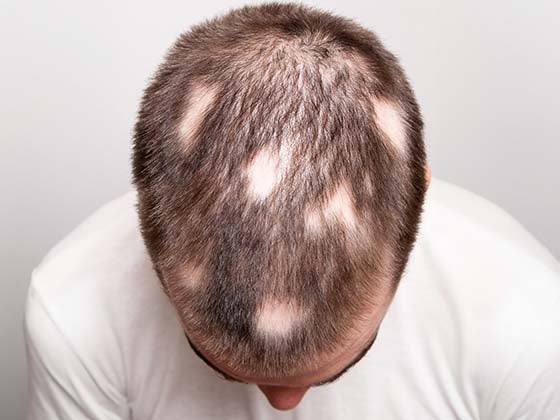Vellus hair is the fine, short, silky hair that covers the majority of the human body. It contrasts with terminal hair, which is rougher, longer, and more pigmented. Understanding the qualities, functions, and maintenance of vellus hair can help address a variety of problems with body hair and general hair health.
What Is Vellus Hair? Understanding Its Role

Vellus hair is thin, fine hair that covers most of your body. You might recognize it as "peach fuzz." It differs from the thicker, longer hair on your scalp, referred to as terminal hair by healthcare practitioners. Vellus hair is often light and shorter than terminal hair. The length, thickness, and color of vellus hair differ from person to person. Vellus hair protects your skin and regulates your body's temperature. You can discover these microscopic hairs on your face, neck, arms, legs, and trunk. Vellus hair does not grow on your feet, palms, lips, or eyelids. Abnormal vellus hair development can indicate several medical issues.
Defining Vellus Hair: Characteristics and Appearance

Terminal hair is thicker, longer, and more pigmented than vellus hair. Comprehending the characteristics and look of vellus hair will enable you to differentiate it from other types of hair and recognize its significance inside the body.
Characteristics
-
Vellus hair is ultra-fine and soft to the touch. It feels smoother and is less noticeable than other hair types.
-
Vellus hair is usually pale in color, appearing translucent or colorless. It might be pale blonde or have a scarcely noticeable color.
-
Vellus hair typically grows to a length of less than 2 cm. It stays quite short and does not usually grow as long as terminal hair.
-
Vellus hair has a shorter anagen phase, which contributes to its shorter length. It sheds and develops more regularly than terminal hair.
-
Vellus hair covers the majority of the body, including the face, arms, legs, back, and torso. It is more visible in some regions, but less so in others.
Appearance
-
Vellus hair on the face is commonly known as "peach fuzz." It gives the skin a soft and even appearance and is especially visible on the cheekbones, forehead, and upper lip.
-
Vellus hair on the body provides light, nearly unnoticeable coverage that aids in temperature regulation and sensory input.
-
Vellus hair is thinner and softer than terminal hair, which is thicker and more visible. Vellus hair becomes shorter and thinner than terminal hair. Terminal hair typically contains more pigment, making it darker and more noticeable, whereas vellus hair is lighter and less pigmented.
How Vellus Hair Differs from Terminal Hair

There are two distinct types of hair, vellus, and terminal, with different characteristics, uses, and looks. To further understand the differences, consider the following comparison: texture and thickness, color, length, growth cycle, distribution, function, hormonal influence, and appearance.
The Function of Vellus Hair in the Hair Follicle Cycle

In the hair follicle cycle, which consists of growth, rest, and shedding, vellus hair plays a specific role. Its function is not as obvious as that of terminal hair, but it is nonetheless essential to the complete system of hair growth and maintenance. Vellus hair's significance in the hair follicle cycle, overall contribution to skin health, and hormonal influence are all discussed here, along with a summary of the hair follicle cycle. Knowing the role vellus hair plays in the hair follicle cycle can help you appreciate how it affects skin coverage, sensory experiences, and general hair growth and renewal.
The Science Behind Vellus Hair Growth and Development

Vellus hair, sometimes known as "peach fuzz," is a type of fine, short hair that covers the majority of the body. Understanding its growth and development entails studying the biology of hair follicles as well as the factors that determine hair characteristics.
Factors Influencing Vellus Hair Growth

-
Genetic Factors: Genetics influence the density, distribution, and features of vellus hair. Family history and hereditary features can influence an individual's vellus hair count and growth patterns. The quantity and density of hair follicles, which are genetically determined, influence the appearance and growth of vellus hair.
-
Hormonal Influence: Vellus hair growth is influenced by androgens. Increased testosterone levels might cause vellus hair to grow coarser or develop into terminal hair. Due to hormonal changes that may alter the vellus hair's appearance and cause it to convert to terminal hair, androgen production increases during puberty. Hormonal changes associated with menopause and pregnancy may also affect vellus hair. For example, increased estrogen levels during pregnancy may have an impact on hair growth patterns.
-
Age: As people age, vellus hair density and characteristics may change. For instance, vellus hair, which is more common in infants and young children, may disappear or alter with age. Vellus hair may become coarser or change into terminal hair during adolescence. Vellus hair density and growth in older adults can be influenced by changes in hormones and skin conditions.
-
Health and Nutrition: Proper nutrition is necessary for healthy hair development. The quality and growth of vellus hair can be impacted by vitamin and mineral deficits, including those in iron, zinc, and B vitamins. Vellus hair growth may be influenced by specific medical conditions, such as metabolic disorders or hormonal imbalances (such as polycystic ovarian syndrome). Disorders affecting hormone levels or general health may affect the density and look of hair.
-
Skin Health and Care: Vellus hair growth can be influenced by the skin condition.
-
Environmental Factors: Environmental factors can influence hair development. Extreme temperatures or pollution, for example, can have an impact on skin and hair health.
-
Medications and Treatments: Several medications, including hormone therapy, may hinder the growth of vellus hair and alter hormone levels, which may result in changes to the appearance of hair.
-
Genetics and Ethnicity: Genetic background can have an impact on the density and distribution of vellus hair. Due to genetic variations, vellus hair development patterns may differ throughout ethnic groups.
Hormonal Effects on Vellus Hair Production

The growth of vellus hair is dependent on hormones. Numerous hormones, such as progesterone, thyroid hormones, corticosteroids, and others, affect the activity and development patterns of hair follicles. Understanding these hormone factors can help with both maintaining the health of hair and treating hair growth issues.
Vellus Hair and Its Relation to Skin Health

In addition to providing some protection, vellus hair aids in temperature regulation and sensory processing are essential for healthy skin. Age, hormone change, and skin health all have an impact on its characteristics. You can regulate any changes in its growth or appearance and its contribution to general skin health by being alert to its properties
Managing and Caring for Vellus Hair

Managing and caring for vellus hair entails following a mild skincare routine, staying hydrated, shielding the skin from environmental aggressors, and addressing any hormonal or health concerns. By following these procedures, you can improve the health of your skin and vellus hair.
Effective Hair Removal Techniques

The best hair removal treatment for you is determined by your pain tolerance, budget, and desired outcomes. Shaving or depilatory creams may be appropriate for short-term remedies, while waxing, sugaring, laser hair removal, or electrolysis may be preferable for long-term outcomes. Always consider skin sensitivity and practice proper aftercare to reduce discomfort and achieve the greatest results.
Vellus Hair Care Tips and Best Practices

Caring for vellus hair entails following a mild skincare routine, ensuring optimal hydration, preventing the skin from environmental harm, and addressing any hormonal or health concerns. Follow these recommended practices to support the health of your skin and vellus hair, ensuring they remain in optimal condition.
Addressing Common Concerns and Misconceptions

To address frequent concerns and misconceptions regarding vellus hair, you must first grasp its role, identify it from terminal hair, and recognize the variables that drive its growth and appearance. Clarifying these difficulties enables you to manage expectations, maintain healthy skin and hair, and select suitable care and treatment alternatives.
Embracing Your Vellus Hair: Personalized Insights and Tips

Embracing your vellus hair involves understanding its natural role, applying gentle care practices, and celebrating your unique appearance. By adopting a personalized approach to skincare and hair care, addressing common concerns, and maintaining a healthy lifestyle, you can appreciate and enhance the natural beauty of your vellus hair.
















